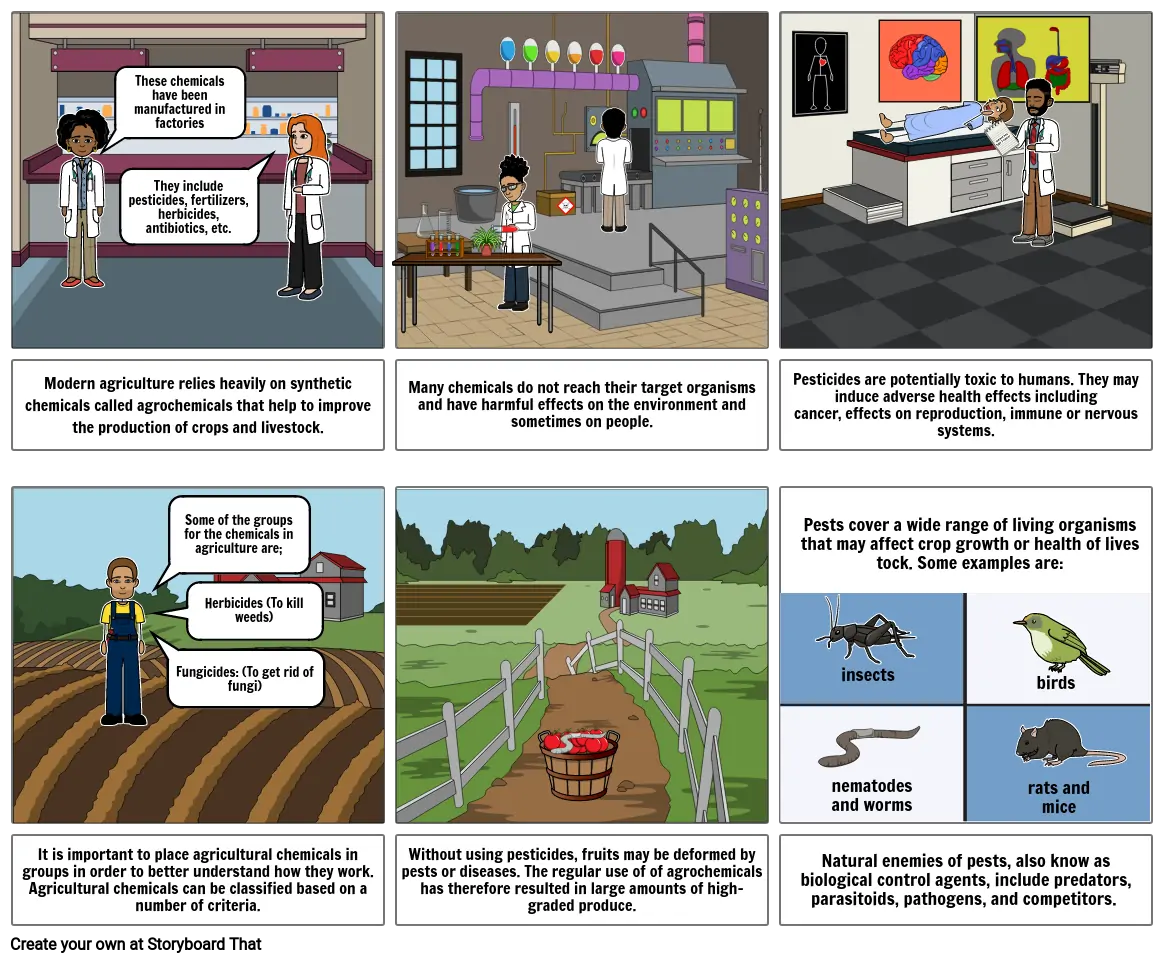Chemicals in Agriculture

Storyboard Text
- These chemicals have been manufactured in factories
- They include pesticides, fertilizers, herbicides, antibiotics, etc.
- patient has type 2 cancer
- Modern agriculture relies heavily on synthetic chemicals called agrochemicals that help to improve the production of crops and livestock.
- Fungicides: (To get rid of fungi)
- Herbicides (To kill weeds)
- Some of the groups for the chemicals in agriculture are;
- Many chemicals do not reach their target organisms and have harmful effects on the environment and sometimes on people.
- Pesticides are potentially toxic to humans. They may induce adverse health effects including cancer, effects on reproduction, immune or nervous systems.
- Pests cover a wide range of living organismsthat may affect crop growth or health of livestock. Some examples are:
- insects
- birds
- It is important to place agricultural chemicals in groups in order to better understand how they work.Agricultural chemicals can be classified based on a number of criteria.
- Without using pesticides, fruits may be deformed by pests or diseases. The regular use of of agrochemicals has therefore resulted in large amounts of high-graded produce.
- Natural enemies of pests, also know as biological control agents, include predators, parasitoids, pathogens, and competitors.
- nematodes and worms
- rats and mice
Over 30 Million Storyboards Created
No Downloads, No Credit Card, and No Login Needed to Try!
